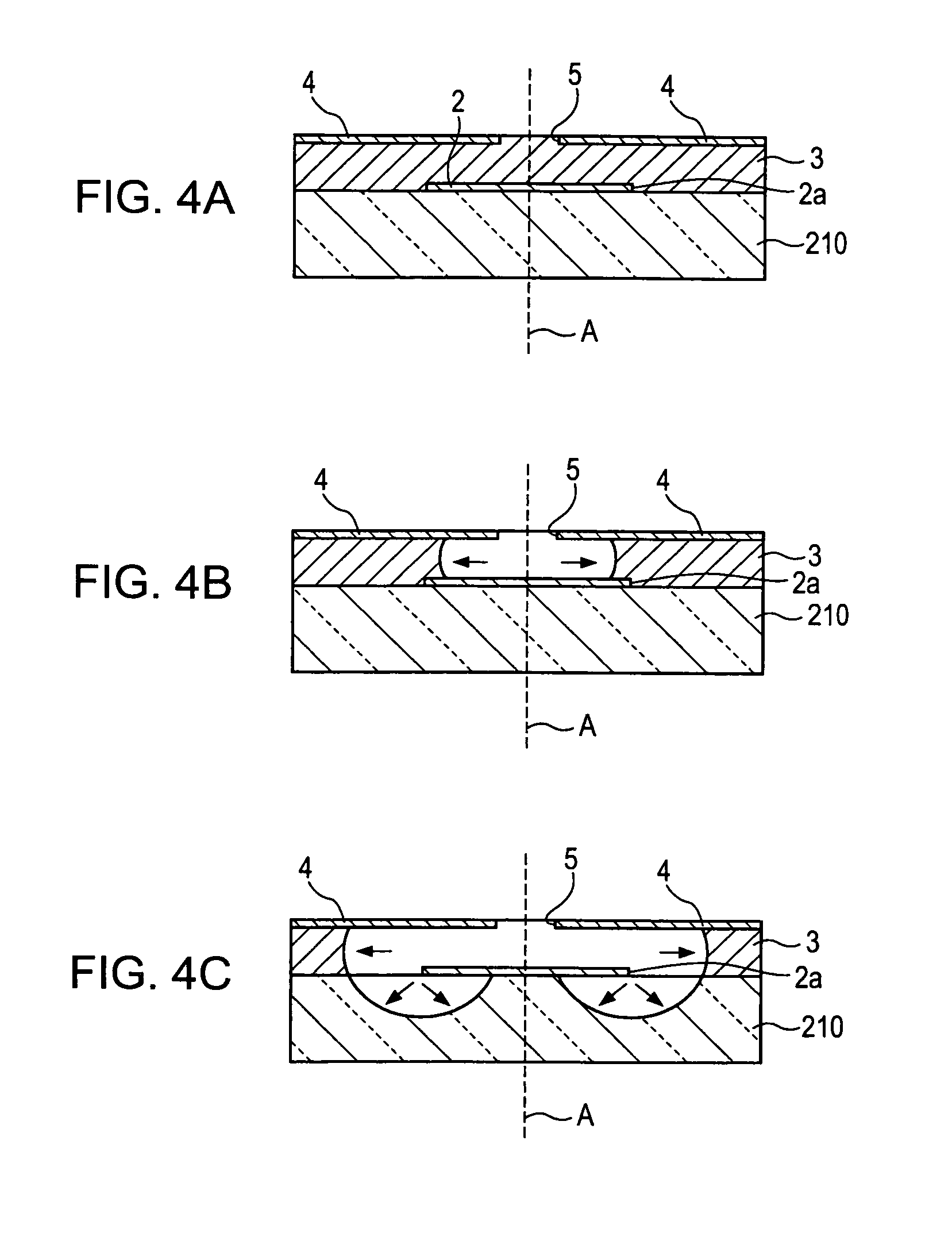Method of manufacturing microlens, microlens, microlens array, electro-optical device, and electronic apparatus
a manufacturing method and technology of microlens, applied in the field of manufacturing microlens, microlens, microlens array, electrooptical devices, electronic devices, can solve the problems deteriorating significantly, and enhancing light usage efficiency, so as to reduce reduce the size, and reduce the effect of reducing the life of liquid crystal devices
- Summary
- Abstract
- Description
- Claims
- Application Information
AI Technical Summary
Benefits of technology
Problems solved by technology
Method used
Image
Examples
Embodiment Construction
[0069]Hereinafter, a microlens manufacturing method, a microlens, a microlens array, an electro-optical device, and an electronic apparatus in accordance with the invention will be described in detail with reference to the accompanying drawings.
Microlens Array Plate
[0070]First, a microlens plate to which a microlens according to the invention is applied will be described with reference to FIGS. 1 to 3. FIG. 1 is a perspective view schematically illustrating a microlens array plate according to the present embodiment. FIG. 2 is an enlarged plan view illustrating a part associated with four adjacent microlenses among microlenses included in the microlens array plate. FIG. 3 is an enlarged view illustrating a part of the cross-section of the microlens array plate in accordance with the present embodiment.
[0071]Referring to FIG. 1, the microlens array plate 20 of the present embodiment is configured to include a plurality of microlenses 500 which are arranged in a planar matrix on a tra...
PUM
| Property | Measurement | Unit |
|---|---|---|
| refractive index | aaaaa | aaaaa |
| transparent | aaaaa | aaaaa |
| size | aaaaa | aaaaa |
Abstract
Description
Claims
Application Information
 Login to View More
Login to View More - R&D
- Intellectual Property
- Life Sciences
- Materials
- Tech Scout
- Unparalleled Data Quality
- Higher Quality Content
- 60% Fewer Hallucinations
Browse by: Latest US Patents, China's latest patents, Technical Efficacy Thesaurus, Application Domain, Technology Topic, Popular Technical Reports.
© 2025 PatSnap. All rights reserved.Legal|Privacy policy|Modern Slavery Act Transparency Statement|Sitemap|About US| Contact US: help@patsnap.com



